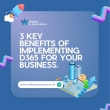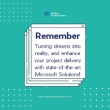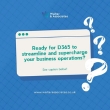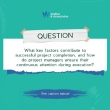As you navigate the ever-changing landscape of the modern workforce, cultivating an agile workforce becomes essential. By embracing AI-powered tools, you can foster a culture of continuous learning and innovation that helps your organization stay ahead of market demands. With AI, you can assess skill gaps, tailor training programs to individual needs, and promote cross-functional collaboration. But, how do you guarantee that your team can adapt to these changes seamlessly? The key lies in building a culture that encourages experimentation, views failure as a growth opportunity, and aligns business potential with the growing potential of your people.
Key Takeaways
- Adaptive Leadership: Flexible leadership and agile work cultures are crucial for responding to AI-driven technological advancements and market changes.
- AI-Driven Training: Leveraging AI for workforce development enhances skill adaptability through tailored training programs and continuous learning opportunities.
- Continuous Learning: Fostering a culture of continuous learning helps bridge the workforce readiness gap, with 92% of employers recognizing its importance.
- Cross-Functional Collaboration: Encouraging diverse perspectives and integrating various skill sets through collaboration platforms is essential for achieving shared goals.
- AI-Powered Talent Management: AI tools identify skill gaps, provide personalized learning experiences, and predict turnover risks, enhancing workforce adaptability and retention.
Building an Agile Work Culture
Building an agile work culture is essential in the age of AI, where technological advancements are constantly reshaping business models. You need to foster an environment that’s responsive and adaptable to these changes.
This involves adopting flexible leadership that can pivot quickly in response to evolving market demands and technological innovations. Your organization should also prioritize adaptive communication, making certain that everyone is informed and aligned with the changing landscape.
As organizations aim for digital transformation, they must also consider tailored IT solutions to address unique needs, facilitating a smooth shift into agile methodologies tailored IT solutions.
Research indicates that the rise of AI is already transforming workplaces, requiring a significant alteration in how companies operate and how employees work. Senior executives are underlining the importance of digital transformation and the need for a more flexible workforce.
To build this agility, you should focus on creating a culture that values continuous learning and adaptation, leveraging AI to augment human capabilities rather than replace them.
Leveraging AI for Workforce Development
As you foster an agile work culture, leveraging AI for workforce development becomes integral to steering the changing landscape. AI training is essential for skill enhancement, personalized learning, and workforce adaptability. By integrating AI into your development strategies, you can optimize performance, guide career pathways, and identify talent more effectively.
In the fast-paced financial services sector, comprehensive IT solutions that incorporate AI can greatly enhance workforce capabilities and operational efficiency.
AI enables tailored training programs, adapting to the individual learning pace and style of each employee. This personalized approach increases engagement and retention, addressing specific skill gaps within your workforce. For instance, AI can analyze job descriptions, performance reviews, and training outcomes to pinpoint what skills are lacking and suggest training programs.
Additionally, AI-driven platforms provide continuous learning opportunities, updating training materials based on evolving job requirements and feedback. By fully embracing AI technology, you can enhance workforce adaptability, streamline talent identification, and guarantee that your organization is well-equipped to meet future demands.
Effective technology integration is key to leveraging AI for successful workforce development, aligning with organizational objectives and fostering a culture of continuous learning.
The Role of Continuous Learning
In the present rapidly changing work environment, 92% of employers recognize the importance of continuous learning for developing the skills of their employees, yet only 42% of employees believe they receive the right type and amount of training to do their jobs well. This discrepancy highlights the need for personalized and adaptive learning strategies.
To cultivate an agile workforce, you need to invest in continuous learning initiatives that include thorough skills assessments to identify skill gaps, knowledge sharing platforms to foster collaboration, and tailored learning pathways to meet diverse employee needs. Incorporating tools for monitoring and evaluating team performance can also enhance the effectiveness of these initiatives.
Moreover, focusing on digital literacy is vital as it enhances employees’ ability to adapt to new technologies. Implementing mentorship programs and adaptive training allows for real-time feedback and adjustment.
Feedback loops are essential for refining learning processes, while competency mapping helps track skill development over time. By integrating these elements, you can create a robust learning ecosystem that not only addresses the workforce readiness gap but also prepares your workforce for ongoing changes in the business landscape.
This proactive approach guarantees that your employees are equipped with the skills necessary to thrive in a dynamic environment.
Promoting Cross-Functional Collaboration
To maximize the benefits of continuous learning and an agile workforce, you should foster an environment that encourages cross-functional collaboration. This approach involves integrating diverse perspectives from various departments to work towards shared goals, promoting a cohesive and dynamic team environment.
By leveraging collaboration platforms and communication tools, you can facilitate seamless interaction among team members, ensuring project alignment and efficient conflict resolution.
Effective cross-functional teams rely on trust building among members, which is essential for fostering open communication and encouraging diverse viewpoints. These teams consist of members with different skill sets and expertise, ensuring that all aspects of a project are covered without needing external dependencies.
For instance, a product development team might include developers, testers, and designers who work together. Their goal is to deliver a complete product increment.
Strategies for Retaining Expertise
Key talent retention strategies in an agile workforce involve leveraging AI and data-driven insights to identify, develop, and manage the skills of employees. To retain expertise, you must implement a multi-faceted approach that includes knowledge transfer, mentorship programs, talent mobility, and skill diversification.
AI can help map employee expertise, identifying areas where knowledge sharing and skill development are needed.
Mentorship programs play an essential role in transferring knowledge from experienced employees to newer ones, ensuring continuity and minimizing skill gaps. Talent mobility programs encourage employees to move between roles, widening their skill base and enhancing adaptability.
Skill diversification through AI-driven training and upskilling programs equips employees with the competencies needed for evolving job requirements.
Effective retention strategies also involve succession planning and employee engagement. By using AI to analyze employee data, you can predict potential turnover and intervene early.
Fostering a culture of continuous learning and growth helps keep employees engaged and committed, reducing turnover and ensuring expertise retention.
Encouraging Experimentation and Innovation
Fueling innovation and experimentation within an agile workforce requires a mindset shift, embracing failure as an opportunity for learning. You must foster an environment that encourages creative risk-taking and idea incubation, where employees feel safe to propose novel solutions and experiment without fear of reprisal.
This means cultivating a failure tolerance that allows for mistakes to be seen as stepping stones to success, not obstacles to be avoided.
Adopting an innovation mindset involves embracing experimental leadership, where leaders champion new ideas and encourage prototype testing. Agile feedback loops are essential, allowing for rapid iteration and refinement of ideas.
Cross-pollination sessions between different teams can also stimulate innovative thinking, as diverse perspectives and expertise come together to solve complex problems.
To truly encourage experimentation and innovation, you need to create a culture that rewards curiosity and creativity. This involves not only providing resources and support but also giving employees the autonomy to explore new ideas and learn from their failures.
Understanding and Utilizing People Analytics
As the modern workforce evolves in the age of AI, leveraging people analytics is essential for making informed, data-driven decisions about talent management and workforce strategies.
You’re no longer relying on intuition; instead, you’re using concrete data to drive your decisions. People analytics provides you with powerful tools to enhance employee engagement through predictive modeling and talent optimization strategies.
By segmenting your workforce based on various criteria, you can tailor your strategies to meet specific needs.
Behavioral analytics helps you understand the underlying factors influencing employee behavior, enabling you to develop targeted interventions. For instance, identifying low-performing groups allows you to create targeted training programs or redefine roles to better match employee skills.
Utilizing people analytics also allows you to develop sophisticated retention strategies by predicting turnover risk and addressing it proactively.
Navigating AI-Driven Workforce Challenges
How will you maneuver the workforce challenges brought by the rapid adoption of AI technologies? Understanding the implications is vital.
One key challenge is job displacement due to automation, which could lead to significant shifts in the labor market. Skill gaps are another concern, as the demand for AI-related skills continues to outpace the availability of skilled workers.
Ethical considerations, such as ensuring fairness and transparency in AI-driven decision-making processes, also need careful handling.
Automation anxiety among employees can be mitigated by fostering a culture of continuous learning and upskilling. Effective remote integration strategies can help by facilitating seamless collaboration and minimizing disruptions in the workflow.
Talent mobility and diversity inclusion are essential as well, ensuring that AI-driven changes align with broader organizational values and objectives.
Finally, revisiting performance metrics to reflect the changing nature of work and the skills required is fundamental.
Aligning Business and People Potential
In the present rapidly evolving business landscape, aligning business and people potential is more vital than ever. You need to guarantee that your workforce isn’t only skilled but also adaptable to changing market demands. Employee engagement and skill alignment are significant factors in achieving this alignment.
By leveraging AI-powered tools, you can identify skill gaps and provide personalized learning experiences that cater to individual needs. This enhances talent optimization and performance enhancement.
Workforce adaptability and change resilience are equally important, as they enable your team to respond to new challenges and opportunities effectively. Role flexibility and clear communication are key to motivating employees to embrace change.
Motivation strategies, such as continuous learning and development opportunities, can help foster a culture of adaptability and resilience.
To bridge the gap between business and people potential, you must invest in tools and strategies that support these goals. AI can play an essential role in this process by providing actionable insights and facilitating skills-based transformation.























